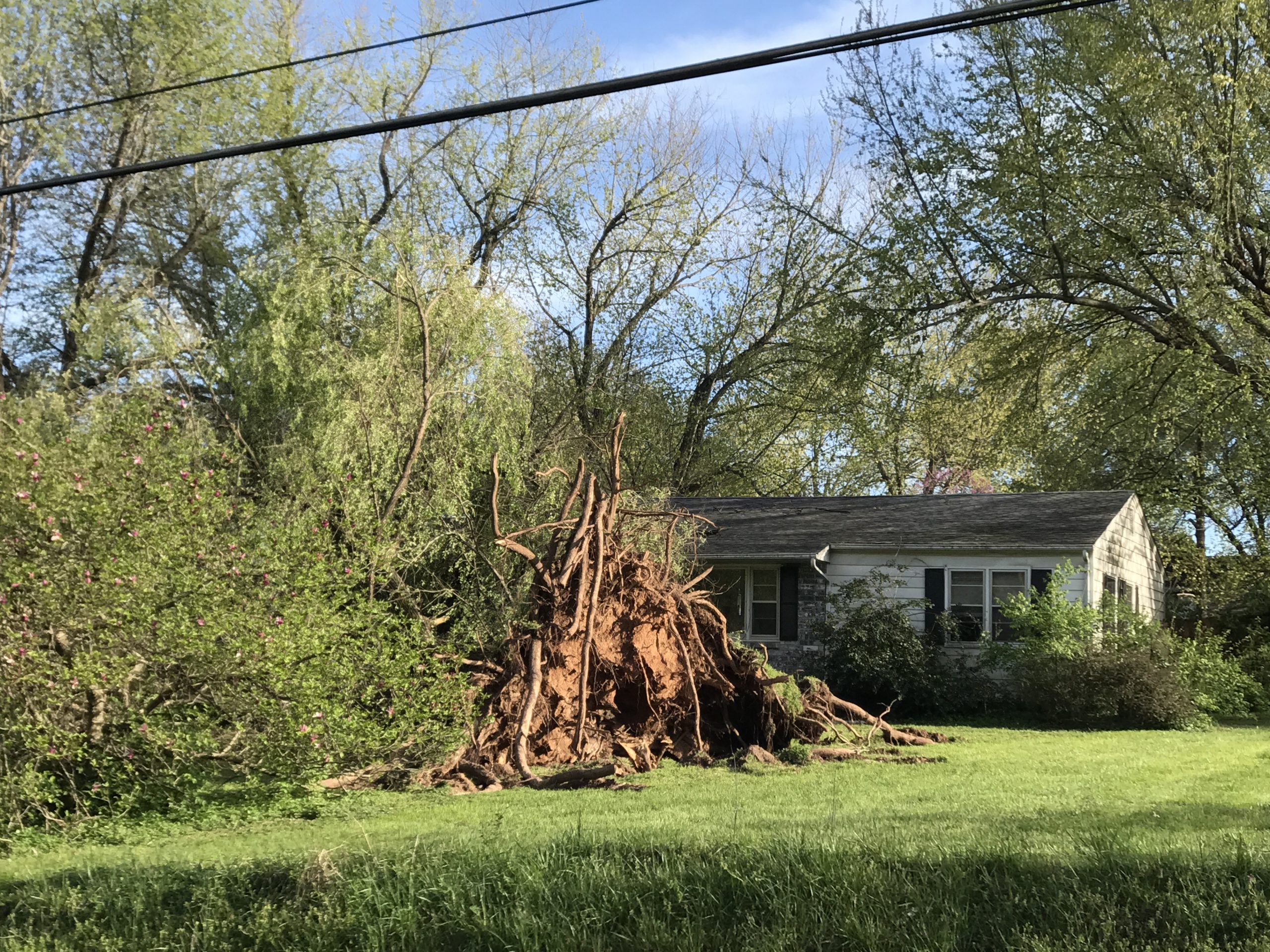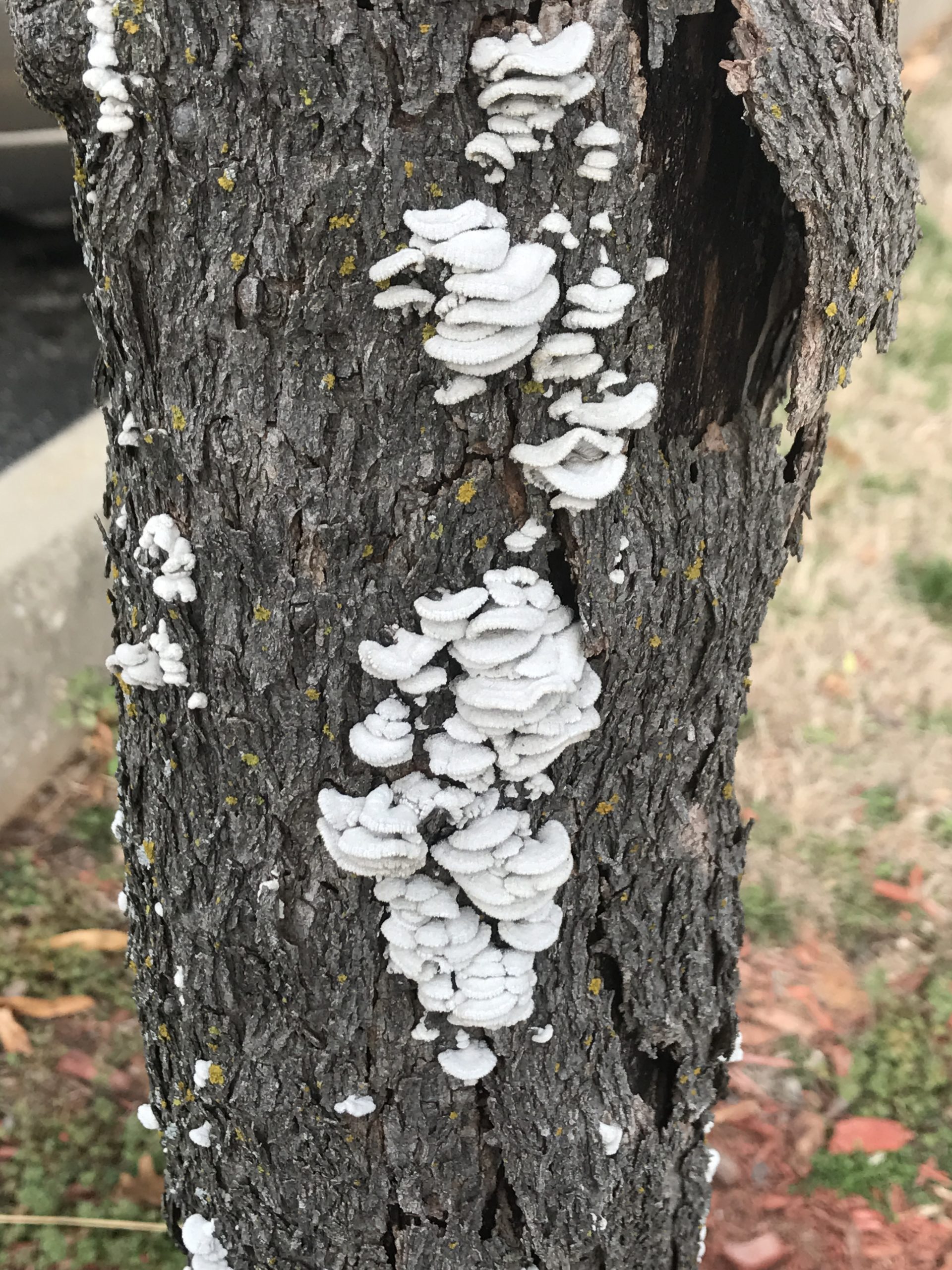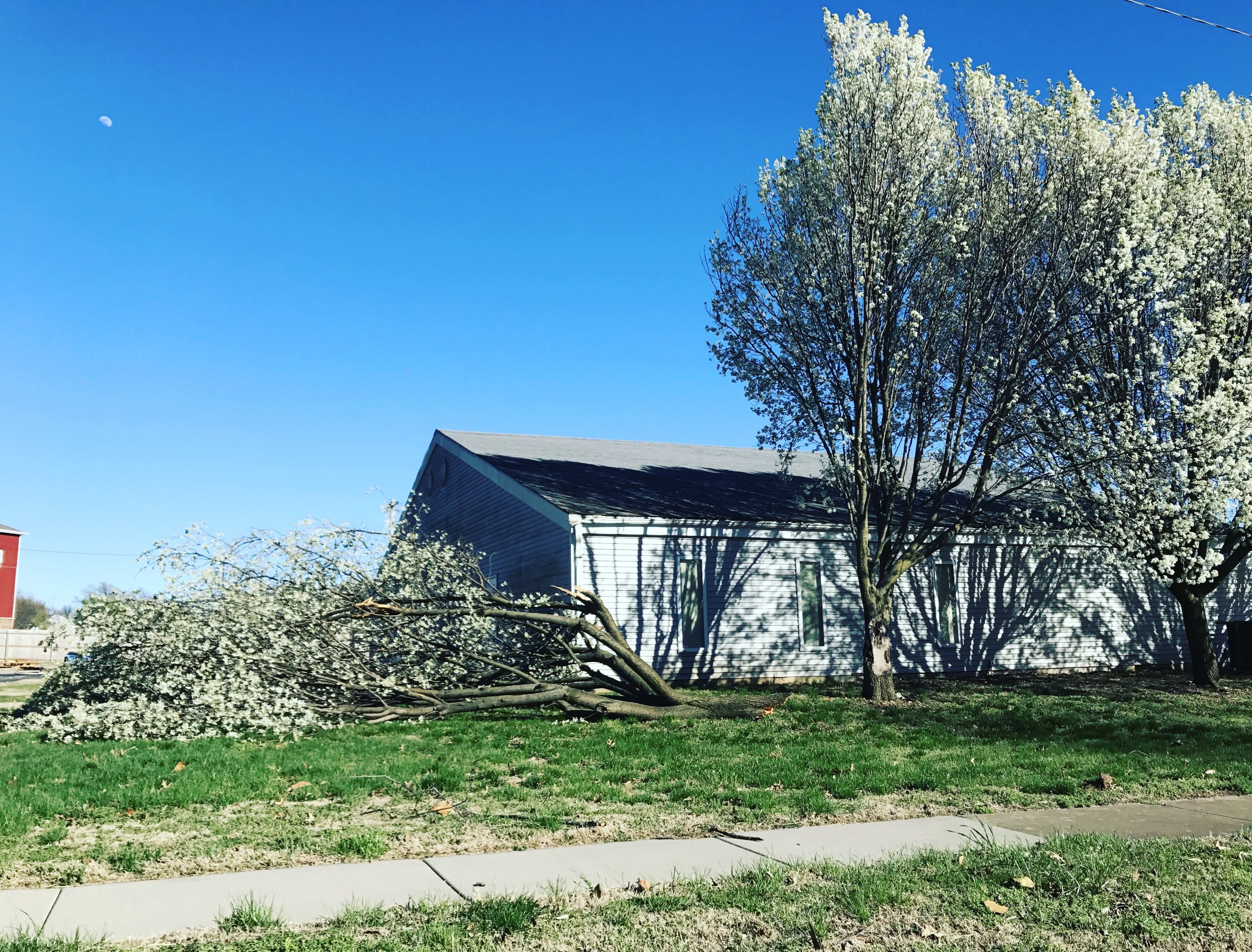With the spring season came storms that resulted in broken branches and sometimes fallen trees. We have had many calls regarding storm damage to trees and have been able to help several people in unexpected emergency situations this storm season. Determining if a tree has the potential to fail or break is not always easy. In this month’s blog, we will discuss some signs of a failing tree and trees that are prone to breakage during storms.

There are many factors that can cause a tree to fail. Usually, it is an accumulation of several factors over a long period of time that lead to the weakening and death of a tree. Some indicators that show a tree has decay are cavities in the trunk or branches, cracks and openings in the bark, and fungus growing on the tree. Fungi is a positive indicator of decay because it feeds on decomposing organic matter. Sometimes, however, decay is not easily detected and a tree can appear completely stable but have major decay within.

Leaning trees can cause worry for homeowners, but not all leaning trees are at a risk of falling. Trees that lean to grow toward sunlight develop what is called “reaction wood” to compensate for the lean and strengthen the tree. However, we do need to be aware if a tree has a sudden lean and look at the root system and soil around the tree. Sometimes the lean of a tree is due to decay underground and the tree is being uprooted.
There are some tree species that are notorious for breakage during storms. These trees may be healthy but have a weak structure that cannot withstand strong winds. Bradford Pears have codominant stems that cause weak branching unions. After a strong storm, it is all too common to find many of these trees broken in half due to their weak structure.

If you have a tree that has a potential to fail, there are some things that can be done to reduce the risk. One thing to consider is whether your tree has a target. Targets are anything that could be harmed or damaged if a tree were to fail. If there is a target and risk is too great, removal of the tree might be the best option. Sometimes decay can be managed through pruning. If there are codominant stems in a tree we can subordinate prune the tree to encourage one strong leader or we can add a cable for extra strength and support.
It is best to get an expert’s advice on the potential risk your tree holds. Give us a call to inspect your trees and come up with the best option for reducing risk.

